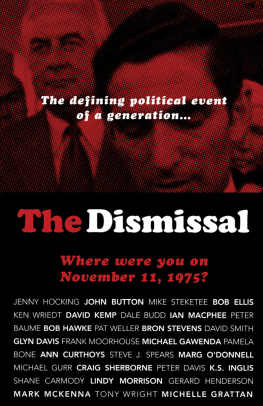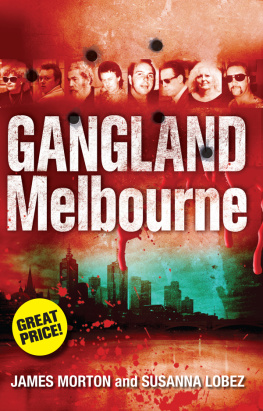This is number one hundred and seventy-eight
in the second numbered series of the
Miegunyah Volumes
made possible by the
Miegunyah Fund
established by bequests
under the wills of
Sir Russell and Lady Grimwade.
Miegunyah was the home of
Mab and Russell Grimwade
from 1911 to 1955.
Carolyn Rasmussen
Shifting the Boundaries
The University of Melbourne
19752015

THE MIEGUNYAH PRESS
An imprint of Melbourne University Publishing Limited
Level 1, 715 Swanston Street, Carlton, Victoria 3053, Australia
www.mup.com.au

First published 2018
Text Carolyn Rasmussen, 2018
Images individual contributors
Design and typography Melbourne University Publishing Limited, 2018
This book is copyright. Apart from any use permitted under the Copyright Act 1968 and subsequent amendments, no part may be reproduced, stored in a retrieval system or transmitted by any means or process whatsoever without the prior written permission of the publishers.
Every attempt has been made to locate the copyright holders for material quoted in this book. Any person or organisation that may have been overlooked or misattributed may contact the publisher.
Cover design by Nada Backovic
Text design by Patrick Cannon
Typeset in Bembo 11.5/14.5pt by Cannon Typesetting
Printed in China by 1010 Printing Asia Ltd

ISBN 9780522872453 (hardback)
ISBN 9780522872460 (ebook)
In memory of my brother,
David Robertson,
19622015
Foreword
Glyn Davis, AC Vice-Chancellor, University of Melbourne
U NIVERSITIES ARE CHALLENGING to capture in words because they offer so many characters, such rich internal narratives, endless links into society. Universities move through time not with determined direction but amid constant argument, aiming for no fixed point. Here is a continuous conversation about purpose, frequent debate on appropriateness, the tensions of tradition and innovation incessantly remaking the entity.
It requires patient historians to make sense from this complexity. The University of Melbourne has been fortunate over many decades to attract authors who illuminate the many partsdepartments, prominent professors, moments of controversyand offer an overarching account of the institution.
In A Place Apart: Decades of Challenge, published in 1996, John Poynter and Carolyn Rasmussen traced developments at the University of Melbourne from 1935 to 1985. The subtitle captured the shifting fortunes of an institution amid economic depression, war, expansion, the embrace of research and fiscal crises that called for new forms of management and organisation.
In this new volume, Carolyn Rasmussen takes the story to 2015. She draws on her earlier institutional histories of the University and allied organisations, from the museum that began on campus to relations with the Carlton community as academic and research buildings encroached on the suburb.
Dr Rasmussens sense of the University reflects not only profound interrogation of the University archives but her own experiences as a student and academic on campus. Alongside interviews with contemporaries, the author occasionally breaks into her text with welcome personal observations about student life, those lecturers who inspired, those concerns about crowded teaching spaces and administrative burdens that carry from generation to generation.
This long engagement with the institution, as community member and official historian, made Dr Rasmussen the obvious choice for the assignment. Yet before agreeing to write the volume, and accepting a Vice-Chancellors Fellowship during the assignment, Dr Rasmussen set out clear expectations about independence. She would structure the book as the material required, with a focus on campus, people, academic units, governance and engagement. She would examine the student experience, the shifting preoccupations of academics, the often undervalued contribution of professional staff.
Success and failure would be reported, alongside the historians judgement. Arguments about the role of management would appear, along with industrial tension and occasional public criticism of University actions.
This Dr Rasmussen achieves with admirable clarity. She deploys an unusual organising principle, looking back from the middle of each decade to map change and development. This structure allows helpful comparison through the long arc of development over forty yearsa time of huge growth, a growing centrality for research, an embrace of engagement as core mission, and some risky experiments as the institution recognised the necessity of finding support beyond Commonwealth funding.
The journey chosen by Dr Rasmussen is accompanied by student voices, academic ambitions, professionalisation of administration, huge cumulative investment in new infrastructure. Each decade the campus seems remarkably changed, triggering inevitable questions about whether underlying purpose and values have been sacrificed in the transformation. Dr Rasmussen reports these arguments but offers an original assessment. She speculates whether Melbourne has developed a university mind, a capacity for institutional coordination around shared goals that cut across local disciplinary interests. That is, can the University act as a coherent actor? Or perhaps administrative devolution and commitment to academic freedom are inimical to constituency, leaving management merely to preside over lightly organised chaos.
A great institutional history invites us to reflect more widely on the ideas that animate the organisation. In this volume, Dr Rasmussen provides an important new contribution to a literature she has already helped shapehow something as singular yet universal as the University of Melbourne might be understood.
Contents
Illustrations
Acknowledgements
A GREAT MANY PEOPLE have contributed to this history in myriad ways, dating back to 1967, when I first walked into the University of Melbourne campus to sign the Matriculation Roll and sit at a rickety table in Wilson Hall to fill in a pile of forms. It might surprise my friends and colleagues to know that I did not intend to study History. So it is that I must first acknowledge the bureaucratic rules that sent me into History, and the inspirational lecturers and tutors I encountered there, for setting me on a path to become an historian. Since then, there have been only four years when I have not been attached to the University of Melbourne in some capacity. My engagement with the history of the University began in 1991, when I joined Professor John Poynter in preparing a history of the University. That book commenced its narrative in 1935, the year in which Raymond Priestley took office as Vice-Chancellor. What I learned from John in the course of that project is immeasurable, and he has remained a wise and encouraging guide on matters related to the history of the Universityand my writing about itever since. Out of that project grew the History of the University Unit, which, in its various forms over the years, brought me into contact with people, too numerous to mention, who have shaped my understanding of the Universitys history from many perspectives. Then in the course of work on the histories of the Engineering Faculty, the Science Faculty, the Centre for the Study of Higher Education, a biography of Professor David Danks, and studies of student leaders and philanthropy, I encountered another large group who must be acknowledged here. The voices of many of those I have interviewed over the years can be heard in this current history, and there are echoes and traces of innumerable conversations, especially with the late George Tibbits, the late Barbara Falk, the late Frank Strahan, Mark Richmond, Cecily Close, Helen Whyte, Farley Kelly and Don Garden.
Next page






